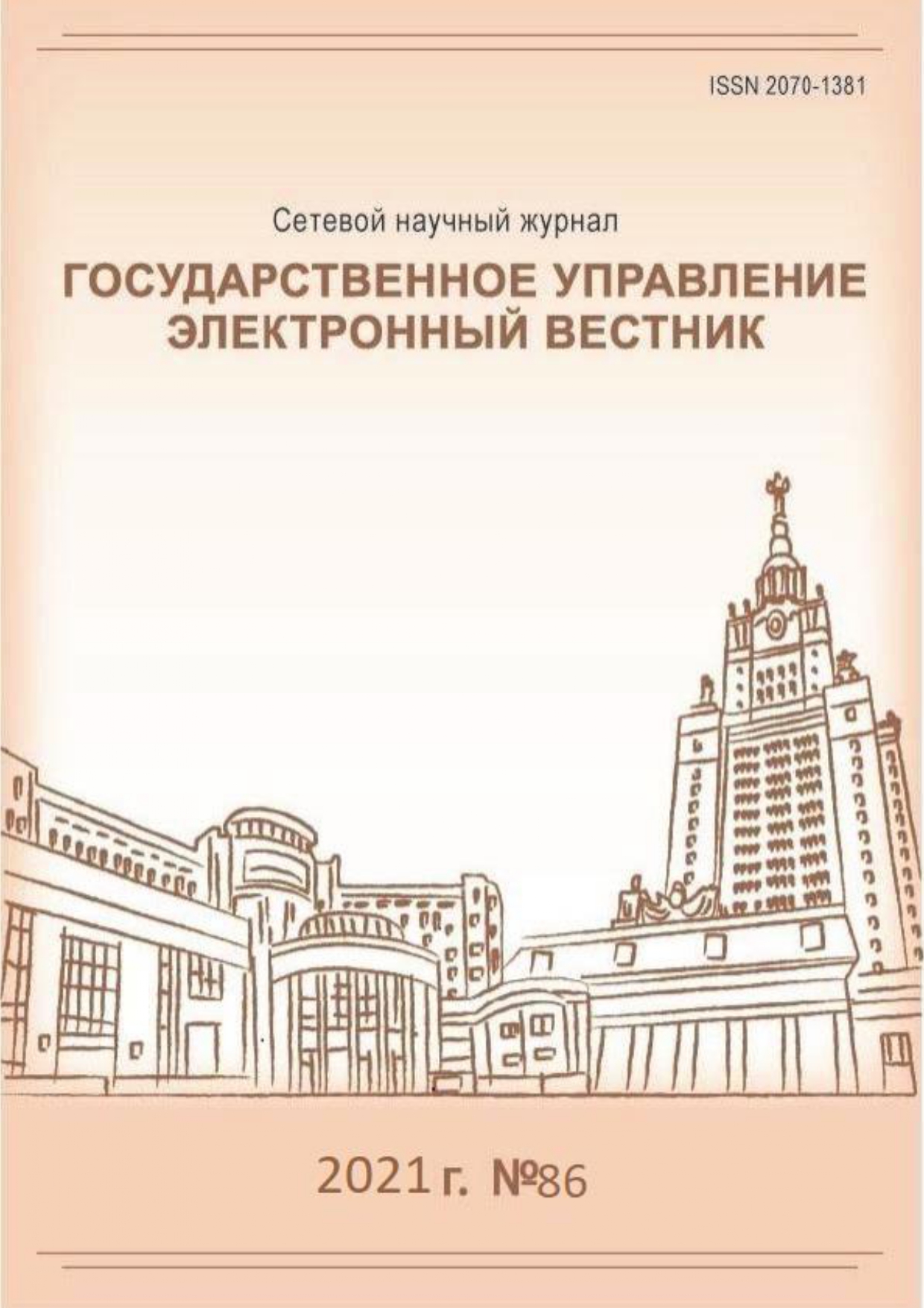Actualization of Identities among the Youth. Part 1: Problem Statement and Research Methodology
Keywords:
Identity, identity governance, ethnicity, ethnic identity, religious identity, territorial identity, Russian civic identity, identity politics, youth politics, North CaucasusAbstract
The article presents the first part of the results of an interdisciplinary identity research focused on the correlation and actualization of various types of identity among young people in the North Caucasus Federal District in Russia. The purpose of this part of the publication is to give the theoretical basis of the research problem and to describe the methodological approach. The expansion of the “identity” concept in the management sphere and in the practice of applied public administration necessitate the development of identity researches, deepening the accumulated experience and testing new methods and approaches to the study of the identity phenomenon and its functioning in a society. These processes are also typical for Russia, where the identity politics is gradually strengthening its position in the public, and the concept of “identity” is actively used by the national leadership and in administration of the national relations sphere. At the same time, the discourse of identity politics in the Russian public sphere is mainly based on a discussion about the interrelation between ethnic and civic identity, while other types of identity come into view during periods of their temporary actualization or politicization. The object of the research is the youth of the North Caucasian Federal District. The youth as a reference group is a heart of identity and youth politics intersection. The choice of the region under study is defined by the diversity and close intertwining of various types of identities among North Caucasus population, as well as the attention of the federal authorities to this population group. The study of identities actualization in the youth environment of the North Caucasus is built on the principle of “career guidance” of the individual, revealing the degree of actualization of one of four types of identity (Russian civil, ethnic, territorial, religious) in relation to each respondent individually and in aggregate to the entire sample. A sociological questionnaire survey was chosen as a primary research method. The research results will be
presented in a separate article (part 2).
References
Авксентьев В.А., Аксюмов Б.В., Васильченко В.А. Политика идентичности в современной России: конструкция и деконструкция (экспертное мнение) // Научная мысль Кавказа. 2017. № 3. С. 23–32. DOI: 10.23683/2072-0181-2017-91-3-23-32.
Дробижева Л.М. Консолидирующая идентичность в общероссийском, региональном и этническом измерениях // Перспективы. Электронный журнал. 2018. № 3(15). С. 6–21. DOI: 10.32726/2411-3417-2018-3-6-21.
Митрошенков О.А. Идентичность: от теоретического концепта к управленческим воздействиям (социально-философский анализ) // Власть. 2016. № 2. С. 14–28.
Молодежная политика в системе формирования гражданской идентичности современной молодежи: коллективная монография / под ред. А.В. Бугаева, Т.К. Ростовской. М.: Издательство РГСУ, 2018.
Морозова Е.В. Сложносоставная идентичность // Идентичность: личность, общество, политика. Энциклопедическое издание. М.: Издательство «Весь мир», 2017. С. 325–334.
Перспективы исследований идентичности в социальных науках: продвижение неконфликтной публичной дискуссии (беседа профессора Л.А. Фадеевой с членомкорреспондентом РАН И.С. Семененко) // Политическая наука. 2020. № 4. С. 74–85. DOI: http://www.doi.org/10.31249/poln/2020.04.04.
Самаркина И.В. Методы и методики изучения идентичности // Идентичность: личность, общество, политика. Энциклопедическое издание. М.: Издательство «Весь мир», 2017. С. 50–60.
Самореализация молодежи Северного Кавказа: проблемы и перспективы. Материалы «круглого стола». 12 декабря 2017 года / под ред. И.И. Гильмутдинова. М.: Издание Государственной Думы, 2018.
Семененко И.С. Политика идентичности и политика развития: смена парадигмы // Траектории политического развития России: институты, проекты, акторы. Материалы всероссийской научной конференции РАПН с международным участием. М.: МГПУ, 2019. С. 357–358.
Яхьяев М.Я., Поломошнов А.Ф., Гурбанов Э.А.-О. Социокультурная идентичность Северного Кавказа в составе России. Научная монография. М.: Парнас, 2013.
Béland D. Identity, Politics and Public Policy // Critical Policy Studies. 2017. Vol. 11. Is. 1. P. 1–18. DOI: https://doi.org/10.1080/19460171.2016.1159140.
Fukuyama F. Identity: The Demand for Dignity and the Politics of Resentment. New York: Farrar, Straus and Giroux, 2018.
Hooghe L., Marks G. Multi-level Governance and European Integration. Lanham, MD: Rowman & Littlefield, 2001.
Huntington S.P. The Clash of Civilizations and the Remaking of World Order. New York: Simon & Schuster, 1996.
Weber A., Hiers W., Flesken A. Politicized Ethnicity: A Comparative Perspective. New York: Palgrave Macmillan, 2016.

